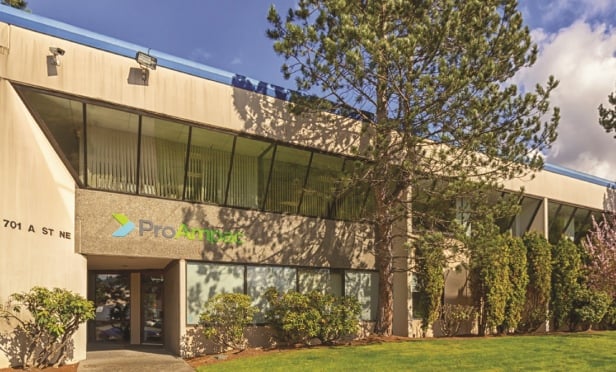NEW YORK CITY—"Real estate continues to shine," according to the subtitle of Colliers International's Global Investor Outlook report, issued Monday. Yet the report, based on a survey of more than 600 investors managing a combined $15 trillion in real estate assets across the globe, also sees an increased level of caution, as well as new phase of the market driven by debt more so than equity.
More than half the survey respondents plan to increase their allocations to real estate investing in 2016, while only 11% plan to allocate less. However, the survey results suggest that while investors are likely to carry forth the momentum they've established over the past few years, they'll be working from a revised playbook this year.
"Our report suggests that the days of 'pass the parcel' are over, and long-term secure investment in core markets will be the norm," says John Friedrichsen, CFO at Colliers. "At the other end of the risk spectrum, large volumes of capital already raised will increasingly seek out opportunities in tier-two cities and recovering markets."
Secondary markets have had growing appeal in recent years for investors searching for yield. Yet this year's survey shows reluctance among most respondents to venture into illiquid markets, which inevitably leads to increased competition that's fueling concerns of a bubble in certain markets.
Whatever markets they venture into, though, an increasing number of global investors plan to partner with local expertise and acquire platforms as a means of placing substantial amounts of capital with confidence. "We prefer local teams on the ground to gain market knowledge and access to product," says a US investor quoted in the survey.
Colliers says this year will see a greater emphasis on secure income and asset management to drive performance.For some investors, achieving return expectations is becoming more of a challenge, particularly in "overcrowded" core markets, which are seen as expensive and fully priced by many. Some fund managers surveyed cited a growing misalignment between client' return expectations and what the market offers.
Going into '16, US investors also seem to be moderately risk-averse, judging by survey results. Just over 40% of respondents from the US are likely to take on more risk next year compared to 58% last year. That being said, the survey finds a slightly higher level of risk tolerance in the US than in Asia Pacific, although investors in the EMEA region are most willing to go out on a limb.
In keeping with the theme of greater caution, although there continues to be a majority of global investors who plan to expand their portfolios this year, it's a smaller majority this year: 54% of respondents, compared to 70% of 2013 respondents angling to be net buyers. Much of the difference in this year's survey is due to the narrower horizons of US-based investors: only 49% expect to be net investors in '16, compared with 77% a year ago.
Therefore it stands to reason that a higher percentage of this year's respondents plan to be net sellers, with 21% of US respondents expecting to sell more than they buy this year, a higher percentage than in any other region. "This might signal a desire from some investors to take advantage of current pricing levels to cash-in and a view that in some markets the property cycle is nearing a turning point," the report states.
Ticking up from last year's survey is the percentage of respondents planning to use debt in future investments. Eighty-two percent of investors surveyed said they were "likely" or "highly likely" to use debt, up from 78% in last year's survey. While Middle Eastern investors represented the highest percentage on a regional basis of investors planning to use debt (100% of respondents), the highest turnaround occurred among European investors. Ninety percent said they're likely to use debt to finance this year's transactions, compared to just 59% in '15, "which suggests that the equity phase of the cycle is giving way to the debt phase," according to Colliers.
© 2025 ALM Global, LLC, All Rights Reserved. Request academic re-use from www.copyright.com. All other uses, submit a request to [email protected]. For more information visit Asset & Logo Licensing.








